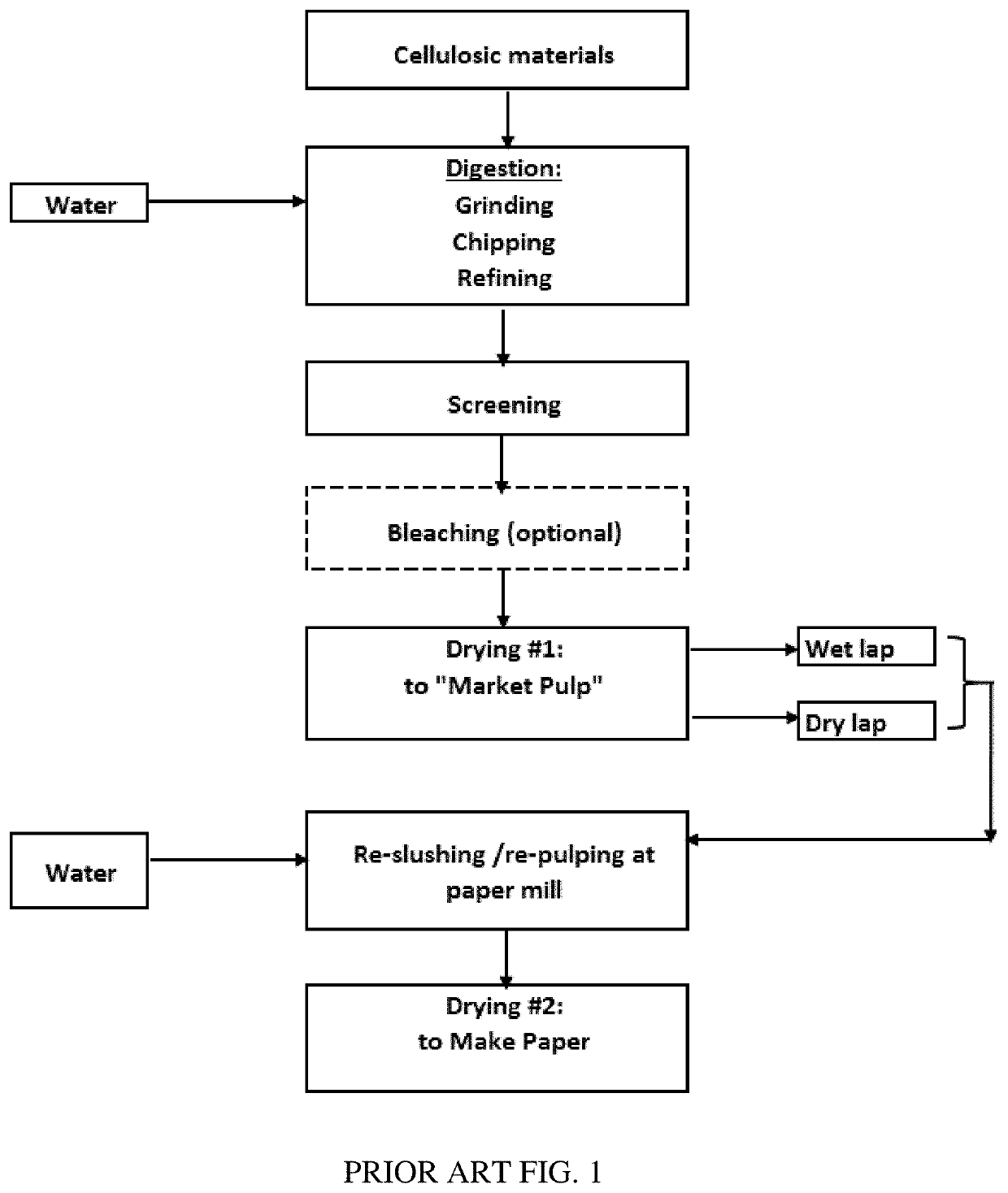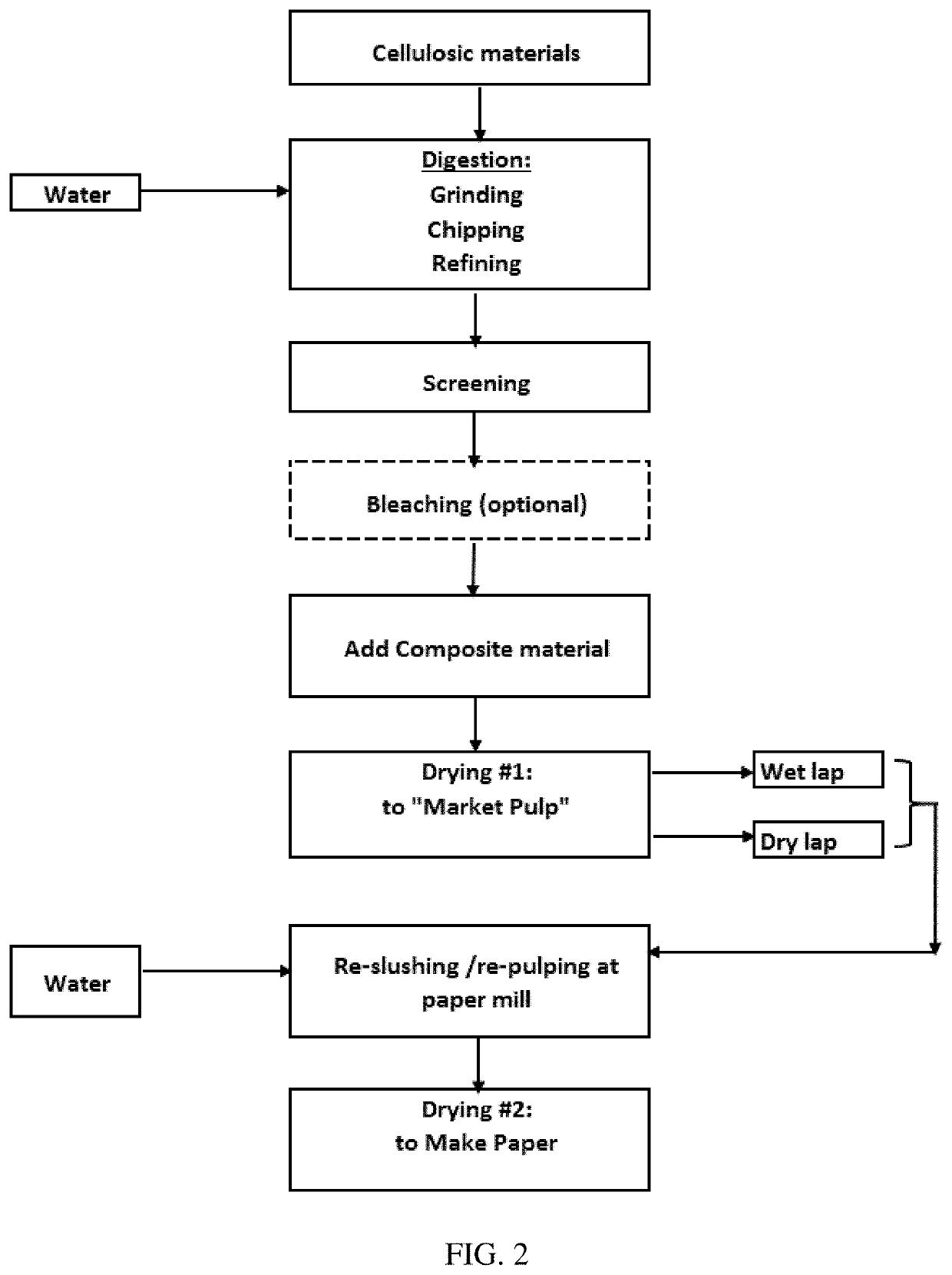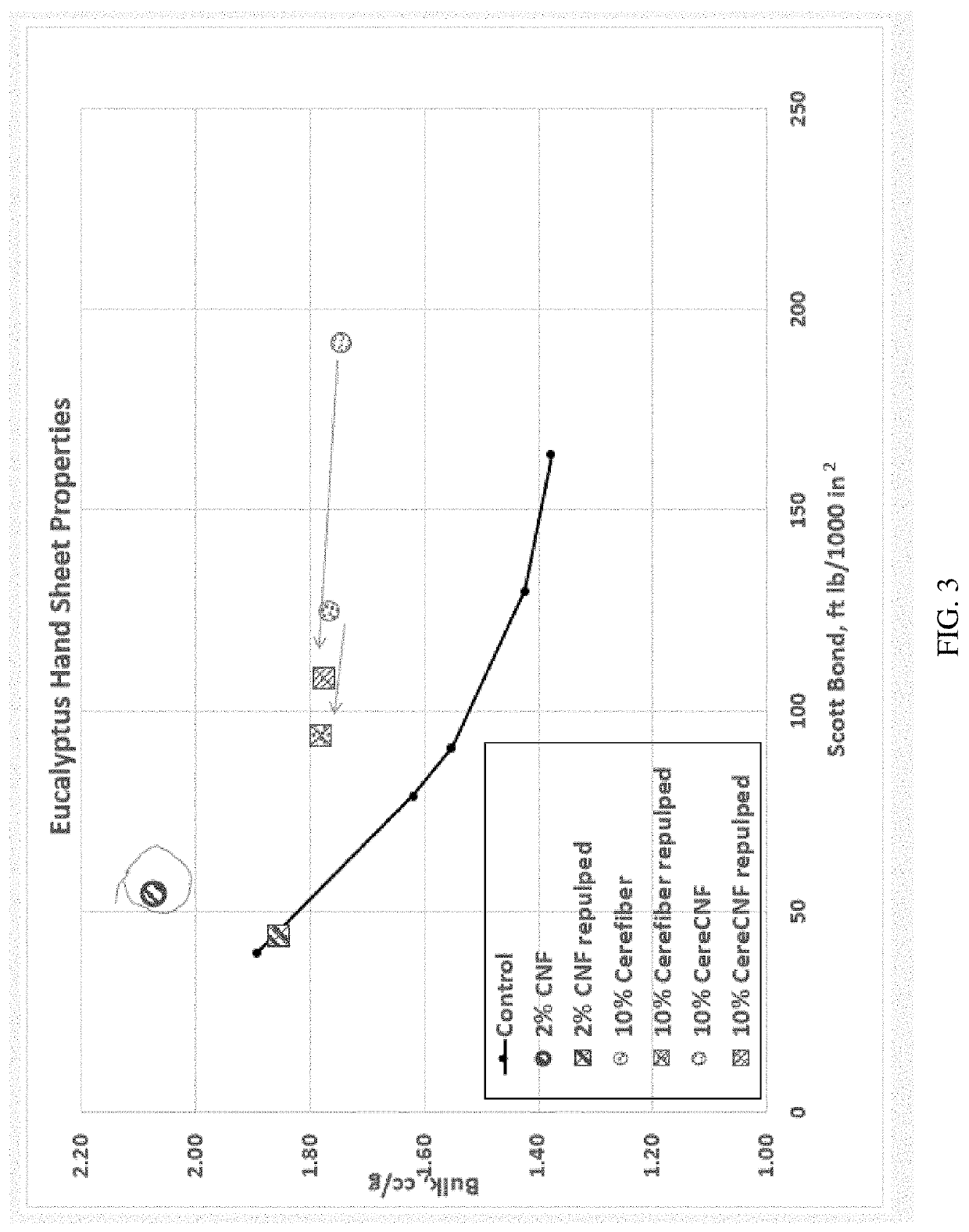Method to Produce Composite-Enhanced Market Pulp and Paper
a technology of composites and market pulp, applied in papermaking, non-fibrous pulp addition, reinforcing agent addition, etc., can solve the problems of losing the benefits of some of these additives, reduce the effectiveness of many additives added to market pulp, and reduce the effectiveness of common strength additives used in papermaking, such as starch and polyacrylamide. the effect of reducing the effectiveness of additives
- Summary
- Abstract
- Description
- Claims
- Application Information
AI Technical Summary
Benefits of technology
Problems solved by technology
Method used
Image
Examples
example 1
Enhanced Market Pulp with Nanofiber
[0052]Bleached Eucalyptus Kraft Pulp (BEKP) market dry lap pulp from Fibria was used as the cellulose fiber and also used to produce cellulose nanofibrils (CNF) used in this example. CNF was refined as described in US2017 / 0073893 to a fines level of from 35% to about 95%. In a first part, handsheets were prepared from the unrefined pulp (Sample 1). Another portion of the pulp was dried to a market pulp and re-slushed to make paper. (Sample 1P. Note, throughout the Examples, a “P” suffix on a sample number indicates a re-slushed and twice-dried paper.) Selected properties of the two papers are given in Table 1, below. Sample 1 serves as the control.
[0053]In a second part of the experiment, three enhanced market pulps were prepared by the addition of a composite material according to the invention. In each case, the enhanced market pulp contained a crosslinking compound, glyoxal, at 0.35% or 0.7%; combined with 5% by weight CNF, either alone (Sample ...
example 2
Enhanced Market Pulp—All Variations
[0056]Bleached Eucalyptus Kraft Pulp (BEKP) market dry lap pulp from Fibria was used as the cellulose fiber and also used to produce cellulose nanofibrils (CNF) used in this example. The starch was a blend of 30% cationic starch and 70% pearl corn starch from Tate & Lyle. The crosslinking compound was CereGel A™, a glyoxal available from Cerealus, LLC (Waterville, Me.).
[0057]Sample 11 is a true “unrefined” control as in Example 1. For additional controls, the rest of a standard five point PFI refining curve (0, 1500, 3000, 4500, 6000 revolutions) was generated (Samples 11.1 to 11.4) using the BEKP dry lap market pulp. This process simulates the process used in paper-making operations to increase the degree of fiber bonding and, therefore, increase the strength of paper made from these fibers. Increased refining, however, also slows the rate of production by reducing the rate of dewatering (decreasing CSF). Laboratory hand sheets at each test point ...
example 3
Enhanced Market Pulp with Starch-Coated Fibers
[0070]Commercial printing and writing (“P&W”) pulp and recycled “Tissue” pulp was obtained from Resolute Forest Products. Samples of these pulps were dried and pressed into handsheets as controls (Samples 15 and 16). These market pulps were enhanced with a “Cerefiber” composite material prepared by the addition of 100 parts per ton (“ppt”) i.e., about 5 wt % of starch to the commercial pulps, and 0.35wt % glyoxal crosslinking agent. The starch was a blend of 30% cationic starch and 70% pearl corn starch from Tate & Lyle. In samples 17P and 18P, the starch was added with heat to the entire mass of fibers; in Sample 19P, only 50% of the fibrous pulp was pre-treated with starch and heat, and this was then mixed with the remaining 50% of the pulp. The enhanced pulps were dried to dry lap and then re-slushed to form handsheets. Selected properties of the control and re-slushed handsheets are given in Table 3.
TABLE 3Hand sheet test results-sta...
PUM
| Property | Measurement | Unit |
|---|---|---|
| diameter | aaaaa | aaaaa |
| diameter | aaaaa | aaaaa |
| diameters | aaaaa | aaaaa |
Abstract
Description
Claims
Application Information
 Login to View More
Login to View More - R&D
- Intellectual Property
- Life Sciences
- Materials
- Tech Scout
- Unparalleled Data Quality
- Higher Quality Content
- 60% Fewer Hallucinations
Browse by: Latest US Patents, China's latest patents, Technical Efficacy Thesaurus, Application Domain, Technology Topic, Popular Technical Reports.
© 2025 PatSnap. All rights reserved.Legal|Privacy policy|Modern Slavery Act Transparency Statement|Sitemap|About US| Contact US: help@patsnap.com



